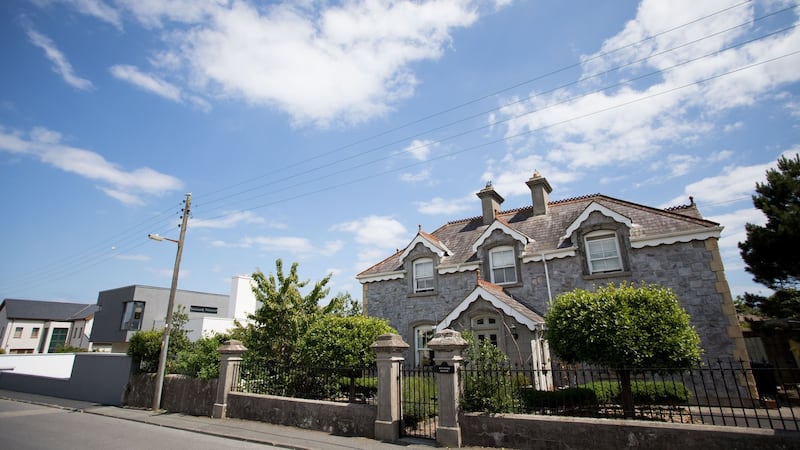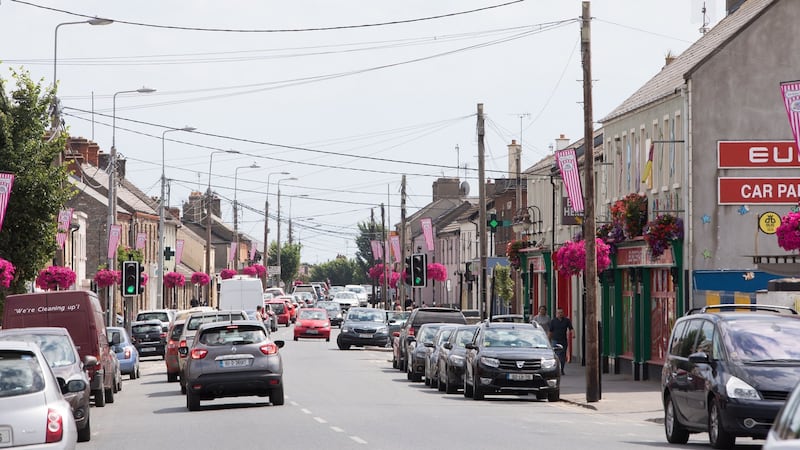Newcomers to the town of Rush is north Co Dublin can't help but fall for its picture-postcard looks. Whether approaching it from the west, along rural roads flanked by fields and fruit farms, or from the coast, meeting the little harbour that catches the setting sun, it feels a bit like the end of the world, but with very nice houses.
And it's from both those agricultural and coastal lands that the town developed from small beginnings. The area, including nearby Lusk, is well-known as the market garden of Leinster, providing good employment. The coastal lands have long been associated with trade into the town, with the headland of Drumanagh, north of Rush, believed to have a been a major trading port with the Roman Empire, with that section of the Irish Sea coast well-known for its smuggling routes.
The origins of sea trade, fishing and agriculture date back as far as the history of the town itself, while fast-forwarding to the 1960s, the Government took over Kenure House, with the land sold to the Irish Land Commission, and split up among local farmers, who brought over a number of Dutch farmers to work on intensive agriculture practices. From that period onwards, Rush grew into what is now very much a Dublin city satellite town, based along a linear settlement that is a small, but quality, hive of bars and restaurants.
And it’s precisely that combination of rural, coastlife, with a twist of a cosmopolitan main street, that is drawing in buyers.
"Many buyers are getting on the ladder in Rush, but then looking at moving back to Skerries at a later date," says Margaret Healy, director of DNG McKenna Healy Skerries. "Other buyers are coming from Dublin city, around the Drumcondra area.
“A lot of the buyers are from Swords, who have been priced out of the market there.”
"Buyers are generally priced out Swords and Skerries," says Shea Kelly, managing director of Kelly and Company Auctioneers. "Rush is probably the most under-priced town in north Co Dublin."
What’s the housing stock like?
Rush has a wide range of homes, from starter apartments to large detached properties with extensive gardens and contemporary seaside homes making the most of the views. There’s a good supply of traditional three-bed semis, as well as smaller terraced homes radiating off the main street. Large, four-bed family homes are also well catered for – either for families relocating to Rush for more space, or trading up within the area.

A growth spurt during the Celtic tiger era means there are a number of new-build homes in the area, usually with three bedrooms. The Kenure neighbourhood is a good example of 1990s' development, fanning out to the north of Rush's main street. Older builds can also be found, with 1950s' homes around Hayestown, while St Catherine's Estate was built in the late 1970s and early '80s.
And the prices?
The entry point to the market at present is €170,000-€190,000 for three-bed terraced homes on Main Street, or a newer-build two-bed apartment on the same stretch.
The €200,000 range starts with a two-bed terraced house at 10 The Forge for €200,000, and runs right up to a five-bed, semi-detached at 1 St Catherine’s Drive for €299,000, with a range of three- and four-beds in the median range. The €300,000 range offers, in the main, four-bed homes in a variety of areas across the town. For €400,000 or €450,000, one can buy plots ready for development at The Mall or Hands Lane, South Shore – both sites have full planning permission for four homes.

The €600,000 mark offers four-bed bungalows at Sundrive Road or Kilbush Lane. A four-bed bungalow with – now lapsed - planning for 11 properties on Palmer Road is priced at €750,000.
At the top of the market is an interesting cube-like 1990s' five-bed home for €850,000 on South Shore Road, with views of Lambay Island, Ireland's Eye and Howth. Or, for something completely different, there's Sanddown, on Channel Road, a 1950s' built Art Deco-style four-bed home with some fascinating architectural detail.
Are there any new developments?
Kenure Gate is being built by Merrion Homes on a site which is a short walk to Main Street and close to Tesco. It will bring 31 three-and four-bed homes to the market. The development is set on three acres of former market gardens overlooking Kenure Park. Dillon Marshall is selling the development.
Kelly & Co is selling a plot of land for one more additional home, with full planning permission agreed, on a site immediately adjacent to Kenure Gate.
Housebuilders Glenveagh have started site works for 129 homes directly behind the Kenure Gate development.
Getting there
It’s a fair journey from Dublin city centre, taking up to 50 minutes to drive at busy times. Commuters rely on numbers 33 and 33x buses, which run into the city centre and the town also shares a train station with Lusk, located between the two towns. It’s about a 25-minute drive to Dublin Airport, where many locals work.
Village life
Rush has lots going for it as a village hub. Very much focused on the Main Street, there is a handful of really good bars. The Harbour Bar, The Carlyann, The Michael Collins and The Strand all get the thumbs up. The Strand is the go-to place on big match days, while Walsh's is known locally as the pub of general congregation.
Skinny Batch serves a good cappuccino and offers extremely friendly service, as well as a deli menu to take-away.
But the real star is D'Vine, serving brunch, tapas, and a bistro-style evening menu. Its sister branch is in Drogheda, with the Rush outlet open since 2017. The food is on-point and extremely fresh. The interiors are slick and tasteful. Worth a visit for sure.
A major retailer has also been granted planning for a commercial centre in the town centre, in a complex that will comprise a supermarket, post office and car park. Also, on the Main Street, a new restaurant and coffee shop will open this year.
Beaches and green space
The North and South Beach, a well as the harbour area, form the main recreation and outdoor spaces. Both beaches are stunning and offer a huge range of watersports, including kayaking through shearwaterseakayaking.ie, which organises trips for all levels, including trips out to north Dublin’s islands and back. There is also a sailing club.
Rush Golf Club has a quite spectacular links setting, while the aforementioned Kenure House ruin offers a parkland area that formed part of the house’s old estate. There are further outdoor areas nearby in the form of The Woods and Kenure Park.
The Millbank Theatre attracts consistent audiences for its productions, and trad sessions are common along Main Street, notably in The Michael Collins.
Who’s lives there?
Young couples form the majority of the buyers in town. These can be commuters who are settling in the area for its mix of value for money and facilities, and also locals, who are first-time buyers or trading up. Airport workers make up a bulk of the buyers, and foreign-nationals are also buying in good measure, particularly eastern Europeans, many of whom are farm workers employed nearby. The newly renovated St Catherine’s Co-Educational Primary School facilities also hold appeal for those with young children.
To buy/to rent
Three-bed, with attic conversion, semi-detached at 35 Lambay View, for €320,000. Agent: DNG McKenna Healy.
Four-bed, two-bath detached at 2 Wood Dale Road, for €369,000. Agent: Kelly and Co.
Four-bed detached at 10 Seabrook, Brook Lane, for €370,000. Agent: DNG McKenna Healy.
Four-bed, five-bath detached at Sandown, Channel Road, for €850,000. Agent: Kelly and Co.
Three-bed, two-bath terraced house at Goldenridge Drive, for €1,750 a month. Agent: Private.
Four-bed, three-bath detached at Channel Road, for €2,400 a month. Agent: DAS Property Management.










